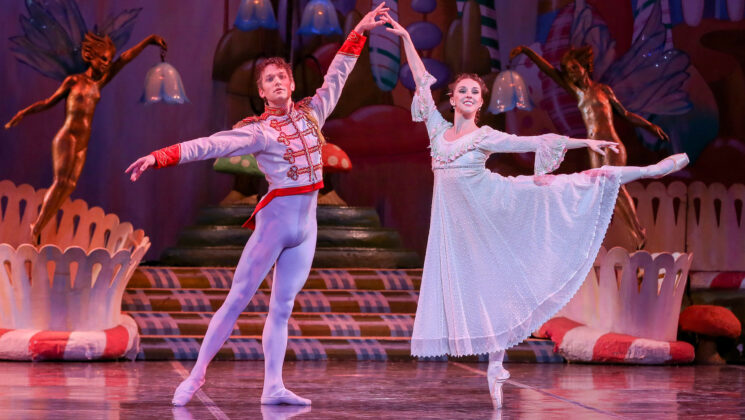
By Tessa Nacke
What do rats, soldiers, coffee, gingerbread men and sugar plums have in common?
They all can be found featured in a ballet known as “The Nutcracker.”
Everyone has seen it. Everyone knows what it is, and the population can collectively admire the artistry of such a beautiful, and festive ballet.
If you haven’t seen it, “The Nutcracker” is a famous two-act ballet, usually performed around Christmas time.
“The plot revolves around a German girl named Clara Stahlbaum and her coming-of-age one Christmas holiday” (Nutcracker).
Clara fights arduous battles, explores a wonderland of places with the Nutcracker Prince, etc.
You didn’t think I was going to spoil it all, did you?
But, what is the real history behind this iconic ballet? And, more importantly, how can the audience learn from this show?
It all started in 1891, when Ivan Vsevolozhsky, the director of Moscow’s Imperial Theatres, commissioned the play. He recruited the best composers and choreographers in Russia, and they got to work.
“[The show] was set to music by Tchaikovsky and originally choreographed by Marius Petipa”(Nutcracker).
Tchaikovsky was known as a very well respected composer at the time, and rose to fame after his success with Sleeping Beauty in 1890.
After working on the show for a year, it was finally ready to see the stage. “The Nutcracker” premiered a week before Christmas in 1892.
“The first performance of the Christmas ballet was held as a double premiere together with Tchaikovsky’s last opera, Iolanta, around the Christmas holiday season on December 18 [O.S. December 6] 1892, at the Imperial Mariinsky Theatre in St. Petersburg, Russia”(Nutcracker).
Surprisingly enough, the first production of the Nutcracker wasn’t a success. Many critics had conflicting opinions about it.
“[Critics] described the choreography of the battle scene as confusing: ‘One can not understand anything. Disorderly pushing about from corner to corner and running backwards and forwards – quite amateurish’”(Wikipedia).
One of the biggest complaints was that the ballet did not properly reflect the adaptation of E.T.A. Hoffman’s “The Nutcracker and the Mouse King.”
Even throughout these complaints, the Nutcracker prevailed. Many theaters outside of Russia began to take notice. Soon, many versions of this ballet emerged.
“The Christmas ballet was first performed outside Russia in England in 1934. Its first United States performance was in 1944 by the San Francisco Ballet”(Nutcracker).
Nowadays, The Nutcracker isn’t always ballet. Some studios feature other styles of dance, such as hip hop, musical theater, and even lyrical. But, the elegant and breath-taking story stays the same.
Around Fountain Valley, many studios can be found producing a Nutcracker of their own.
How long does it take to prepare for such an event?
“I spend every Saturday from 11am to 5pm working on Nutcracker,” freshman Mia Yee said.
Yee started working on the Nutcracker on October 1st.
Wow! The Nutcracker is a lot more work than it sounds. The endless rehearsals, pointe shoe bruises, and sweat definitely add up.
Although, most importantly, what can we learn from the Nutcracker?
The Nutcracker teaches us about coming-of-age. As Clara explores this magical place, she grows! She grows as a person, and as a dancer. This can be applied to daily life too.
As you meet new people, and experience the world around you, you grow! You grow both mentally and physically. So, enjoy the coming-of-age section of your lifetime. If you aren’t coming of age quite yet, reflect on it.
“The true secret of happiness lies in taking genuine interest in all the details of daily life,” poet William Morris said. Enjoy the little things!
Or, of course, you could always go see the Nutcracker in theaters.





